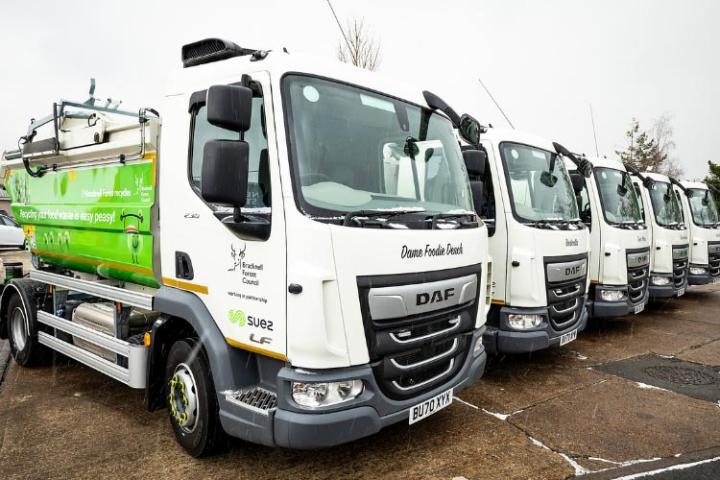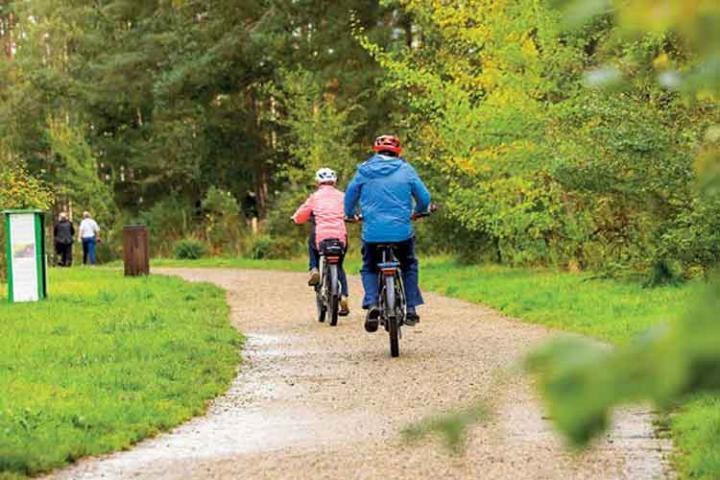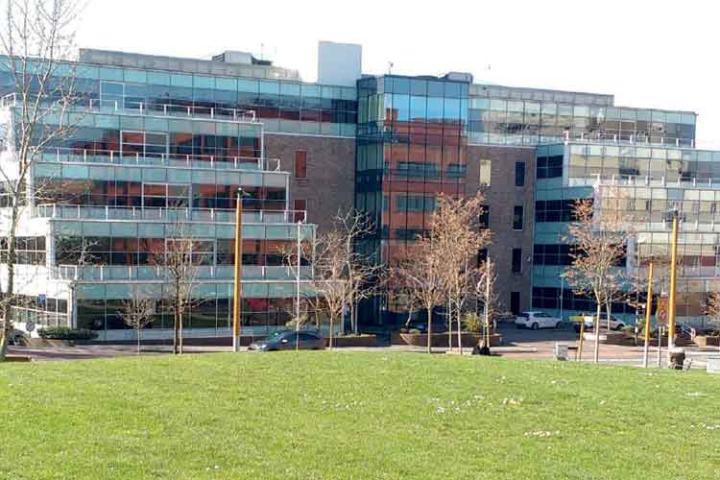Council Tax is a property based tax collected by Bracknell Forest Council. The money goes towards funding council services such as:
- education
- libraries
- highways
- street lighting
- refuse collection
Council Tax is a property based tax collected by Bracknell Forest Council. The money goes towards funding council services such as:
Council Tax is also spent on services provided by:
It is not a direct payment for services and you need to pay whether you use these services or not.
Like all local authorities, the council is experiencing financial pressures that mean balancing the budget is increasingly challenging. At the same time, we are working hard to make sure we retain good and high-quality services for residents.
As always, we consulted on draft budget proposals between December 2024 and January 2025. Hearing your views is a very important part of the budget setting process. The council received just over 130 formal responses to the budget consultation. Additional informal feedback was captured at public engagement sessions run by our councillors across the borough.
Overall, more than half of all respondents agreed or strongly agreed with all our budget proposals, individually and as a package. The consultation also showed strong support for our plans to invest an additional £2.7 million to repair and improve the borough’s roads and for our work in promoting independence for vulnerable adults.

The budget approved by Council on 26 February includes £8.4 million of capital investment in our assets, funded by the council. This includes nearly £1 million on energy efficiency and environmental work that form part of our climate change action plan. The budget also includes £250,000 revenue funding to support delivery of the action plan. This reflects the council’s commitment to achieve Net Zero as close as possible to 2030.
Our largest spending pressures are in services to support vulnerable adults, reflecting current and expected demand. Adult social care spending alone will increase by £6.5 million next year. This and other pressures mean that Council Tax will be increasing by 4.99%. however, we will remain in the lowest 10 per cent of unitary councils.
Working age households receiving Council Tax Support will once again see a reduction in their tax bill of £50 in 2025 to 2026. Other support is available for low-income households. Anyone struggling to keep up with payments should contact our revenue services team who will be able to provide you with advice and support.
Susan Halliwell, Chief Executive
Your Council Tax bill is made up of 4 charges:
This table shows the amount that will be charged for an average band D home, depending on the parish area in the coming year. These figures do not include any Council Tax relief you may be entitled to.
| Area | Bracknell Forest Council | Parish precept | Other precepting bodies | Total band D charge |
|---|---|---|---|---|
| Binfield | £1,696.77 | £62.13 | £369.59 | £2,128.49 |
| Bracknell | £1,696.77 | £104.25 | £369.59 | £2,170.61 |
| Crowthorne | £1,696.77 | £101.60 | £369.59 | £2,167.96 |
| Sandhurst | £1,696.77 | £81.68 | £369.59 | £2,148.04 |
| Warfield | £1,696.77 | £57.75 | £369.59 | £2,124.11 |
| Winkfield | £1,696.77 | £86.91 | £369.59 | £2,153.27 |
The Environment Agency, as a levying body for its Flood and Coastal Erosion Risk Management Functions under the Flood and Water Management Act 2010 and the Environment Agency (Levies) (England and Wales) Regulations 2011, provides the following information:
The Environment Agency has powers in respect of flood and coastal erosion risk management for 5,200 kilometres of main river and along tidal and sea defences in the area of the Thames Regional Flood and Coastal Committee. Money is spent on:
| Detail | 2025 to 2026 (£'000) | 2024 to 2025 (£'000) |
|---|---|---|
| Gross expenditure | 126,785 | 157,319 |
| Levies raised | 13,030 | 12,776 |
| Total Council Tax base | 5,453 | 5,365 |
The majority of funding for flood defence comes directly from the Department for Environment, Food and Rural Affairs (Defra). However, under the new Partnership Funding rule not all schemes will attract full central funding.
To provide local funding for local priorities and contributions for partnership funding the committee recommends through the Environment Agency a local levy.
Changes in the gross budgeted expenditure between years reflect the programme of works for both capital and revenue. The total local levy raised has increased by 1.99% from £12.78 million in 2024 to 2025 to £13.03 million for 2025 to 2026.
Every year the council delivers a wide range of services for people who live, work and study in the borough.
A revised organisational structure was introduced in September 2018 with the council now split into 3 main functional areas.
Specific areas include:

For residents, the directorate's services are focused on delivering the right support for all residents of Bracknell Forest, when they need it, and empowering them to get the best out of life.
It aims to provide the best possible opportunities for our young people by providing effective support and challenge to our schools and to keep everyone, whatever their age, connected to their community, family and friends and able to access the right opportunities they need to thrive.
Another key outcome is to keep more families safely together and, by providing the right support at the right time, enable people to live as independently and well as possible, for as long as possible.
Has responsibility for major contracts covering areas such as waste management and the provision of leisure facilities with our partner Everyone Active. Also provides services directly to the public including customer and electoral services, libraries and the cemetery and crematorium. Provides legal, property management and ICT support services.
Responsible for providing strategic financial, organisational development, transformation and HR leadership to the council and support and advice to other directorates. Leads on the place shaping of the borough dealing with both day-to-day and long-term planning, open space provision, highways maintenance, transport planning and the ongoing regeneration of Bracknell town centre. Aims to create a borough where the economy can thrive and sustainable growth is positively planned for. Responsible for Public Health.
This page contains information about the council’s spending on its day to day services and how this is to be paid for, including details of your Council Tax.
The council also needs to spend money called “capital” on maintaining its buildings (including schools, leisure centres and libraries), construction works such as major road and school improvements and buying equipment.
The council’s programme of capital works has been developed to be affordable, sustainable and prudent, with projects being carefully prioritised to help achieve the 3 borough priorities included in the new Council Plan.
In this context, the council has developed a range of capital proposals and spending for next year is planned to be approximately £14.4 million, of which £8.4 million will be funded directly by the council.

Some of the major projects in our programme include:
£2.8 million on major works at primary and secondary schools
£6.1 million on highways infrastructure maintenance and improvement
£4.4 million on maintaining and investing in council buildings
£0.7 million on IT infrastructure
When managing such a large budget we need to make sure we have enough money to cover any unexpected emergencies.
The amount of money we are using this year from balances which we already have “in the bank” to support the cost of our services.
| Service | Gross (£’000) | Income (£’000) | Net (£’000) |
|---|---|---|---|
| Central | 27,483 | (22,112) | 5,371 |
| Delivery | 33,553 | (13,645) | 19,908 |
| People | 315,603 | (220,951) | 94,652 |
| Cost of services subtotal | 376,639 | (256,708) | 119,931 |
| Environment Agency Levy | 125 | Not applicable | 125 |
| Net interest and debt financing costs | 6,248 | Not applicable | 6,248 |
| Contribution to/(from) earmarked reserves | (1,224) | Not applicable | (1,224) |
| Contribution to/(from) schools deficit account | (8,695) | Not applicable | (8,695) |
| Business rates | Not applicable | (12,697) | (12,697) |
| Other specific grants | Not applicable | (2,083) | (2,083) |
| Subtotal | 373,093 | (271,488) | 101,605 |
| Contingencies | Not applicable | Not applicable | 3,992 |
| Use of general balances | Not applicable | Not applicable | Not applicable |
| Bracknell Forest Council Net Revenue Budget after use of balances | Not applicable | Not applicable | 105,597 |
| (Surplus)/Deficit on collection fund | Not applicable | Not applicable | 1,078 |
| Government support | Not applicable | Not applicable | (21,008) |
| Bracknell Forest Council Council Tax requirement | Not applicable | Not applicable | 85,667 |
| Parish precepts | Not applicable | Not applicable | 4,486 |
| Council Tax requirement including parish precepts | Not applicable | Not applicable | 90,153 |
| Service | Gross (£’000) | Income (£’000) | Net (£’000) |
|---|---|---|---|
| Central | 26,846 | (21,882) | 4,964 |
| Delivery | 30,716 | (11,135) | 19,581 |
| People | 272,293 | (184,314) | 87,979 |
| Cost of services subtotal | 329,855 | (217,331) | 112,524 |
| Environment Agency Levy | 125 | Not applicable | 125 |
| Net interest and debt financing costs | 5,244 | Not applicable | 5,244 |
| Contribution to/(from) earmarked reserves | (5,485) | Not applicable | (5,485) |
| Contribution to/(from) schools deficit account | (6,483) | Not applicable | (6,483) |
| Business rates | Not applicable | (11,674) | (11,674) |
| Other specific grants | Not applicable | (895) | (895) |
| Subtotal | 323,256 | (229,900) | 93,356 |
| Contingencies | Not applicable | Not applicable | 4,000 |
| Use of general balances | Not applicable | Not applicable | Not applicable |
| Bracknell Forest Council Net Revenue Budget after use of balances | Not applicable | Not applicable | 97,356 |
| (Surplus)/Deficit on collection fund | Not applicable | Not applicable | 3,647 |
| Government support | Not applicable | Not applicable | (20,691) |
| Bracknell Forest Council Council Tax requirement | Not applicable | Not applicable | 80,312 |
| Parish precepts | Not applicable | Not applicable | 4,203 |
| Council Tax requirement including parish precepts | Not applicable | Not applicable | 84,515 |
| Bracknell Forest Council | 2025 to 2026 (£’000) | Per Band D property |
|---|---|---|
| Gross expenditure | 373,093 | 7,389.74 |
| Less: income | (271,488) | (5,377.28) |
| Add: contingencies | 3,992 | 79.07 |
| Net expenditure | 105,597 | 2,091.53 |
| Less: use of general balances | Not applicable | Not applicable |
| Net revenue budget after use of balances | 105,597 | 2,091.53 |
| Less: (surplus)/deficit on collection fund | 1,078 | 21.34 |
| Less: government support | (21,008) | (416.10) |
| Amount to be raised from Council Tax | 85,667 | 1,696.77 |
| Bracknell Forest Council | 2024 to 2025 (£’000) | Per Band D property |
|---|---|---|
| Gross expenditure | 323,256 | 6,504.93 |
| Less: income | (229,900) | (4,626.31) |
| Add: contingencies | 4,000 | 80.49 |
| Net expenditure | 97,356 | 1,959.11 |
| Less: use of general balances | Not applicable | Not applicable |
| Net revenue budget after use of balances | 97,356 | 1,959.11 |
| Less: (surplus)/deficit on collection fund | 3,647 | 73.39 |
| Less: government support | (20,691) | (416.37) |
| Amount to be raised from Council Tax | 80,312 | 1,616.13 |
Your parish council is the first tier of local government. It is closest to the people it represents. The elected members in each of Bracknell Forest’s 6 parishes work closely with community groups and Bracknell Forest Council to provide services relevant to each area. They vary in size and population but each tailors its services and spending to its community. Some are predominantly urban, and others more rural.
Their work often includes local environmental work in parks and play areas, provision of sports pitches and open spaces, play equipment and allotments. Some run community halls and services for young people and all give grants to help local groups. All of them have staff who can help you with information on local groups and parish and borough-wide services.
Contact your parish council to learn more, by telephone or by visiting its website. It is there to serve you and your local needs. Your input helps it provide the right services for your parish.
This is the amount of money your local parish or town council requires to run services in that area. Each individual parish precept for an average band D home is outlined in the table below.
| Area | 2025 to 2026 total | Band D charge |
|---|---|---|
| Binfield | £303,917 | £62.13 |
| Bracknell | £2,222,402 | £104.25 |
| Crowthorne | £373,784 | £101.60 |
| Sandhurst | £656,135 | £81.68 |
| Warfield | £322,072 | £57.75 |
| Winkfield | £607,414 | £86.91 |
| Area | 2024 to 2025 total | Band D charge |
|---|---|---|
| Binfield | £291,360 | £60.71 |
| Bracknell | £2,082,122 | £99.30 |
| Crowthorne | £321,093 | £93.64 |
| Sandhurst | £628,241 | £78.54 |
| Warfield | £275,555 | £49.76 |
| Winkfield | £604,987 | £86.91 |
| Area | 2025 to 2026 gross expenditure (£'000) | 2024 to 2025 gross expenditure (£'000) |
|---|---|---|
| Binfield | 432 | 310 |
| Bracknell | 3,107 | 2,926 |
| Crowthorne | 507 | 436 |
| Sandhurst | 897 | 879 |
| Warfield | 428 | 393 |
| Winkfield | 1,732 | 1,775 |
If you need a reasonable adjustment to communicate with us, please contact us by:
Email: revenue.services@bracknell-forest.gov.uk
Phone: 01344 352011